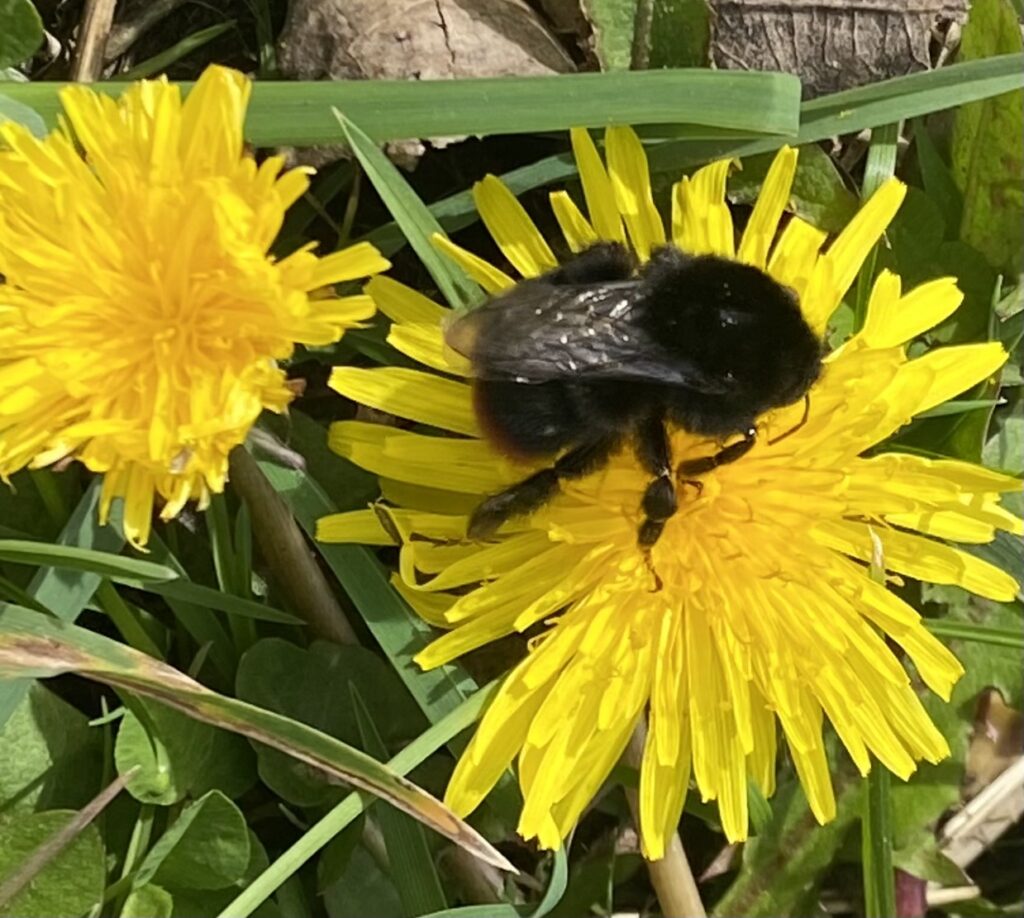Taraxacum officinale
You might be surprised to find dandelions on my pollinator plant list, but these bright, vibrant landing pads are virtual nectar bars for all pollinators in spring.
Dandelions are food for many garden pollinators
Take a look around the garden in March and April and see what is in flower for our early emerging pollinating pals. You are bound to find a clump or two of dandelions. These are precious and vital food source for our pollinators. Stake them out and watch who visits. Butterflies, bees of every type and flies too all stop and sup the nectar from the flowers. The protein rich, yellow pollen is a valuable food source for insects and especially bees.
Some people call them weeds? But they are native wild flowers that have evolved with our pollinating friends. If you can live and let live you will be doing pollinators and other garden wildlife a great favour.
I often wonder why we don’t revere these plants? They have spectacular rich yellow flowers in abundance. Each flower head is a smorgasbord of pollen and nectar rich flower tubes, making it a dinner plate for visiting pollinators that can land easily on its flowers and set to work feeding. Would we love them more if they were pink or purple or white?
The plants have nutrient rich, healthy green leaves, which I feed to my chickens and they fight for the chance to eat them. The fluffy golf-ball seed heads are a childhood storyboard, a moonscape of perfectly arranged seeds that are set free on the breeze or by a puff of breath. A time-telling clock or a fairy firework? And even the seeds are an important source of food for seed eating birds like goldfinches.

Of course you probably don’t want dandelions popping up between the paving slabs on your patio, but before you spray these incredible plants spare a thought for the wildlife that depend on this layer of the food chain and leave some of them to flower their socks off. Pick the flower heads before they set seed to reduce their self-seeding in your garden, but try and leave a few to flower, especially in early spring or in places where they are doing no harm.
In time you might fall in love with dandelions or learn to admire the tenacity and survival skills of these incredible plants. The leaves are edible, if a little bitter. You can blanch a few plants under a flower pot and add them to your salads. Or why not roast a few of their fat roots and see if they are a good coffee alternative, or just stand back and let nature take its course so that our pollinators can feed, breed and shelter in safety.